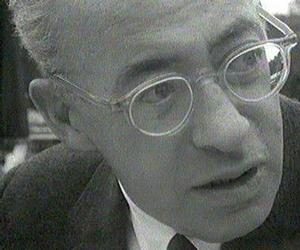Below you will find the exploration of the term leader as through the eyes of Ella Baker and Saul Alinsky, two organizational leaders with different outlooks on community organizing.
————————————————————————————————————————————
What is a Leader?
Ella Baker and Saul Alinsky were just two organizational leaders and activists who understood the importance of teamwork. While they both saw the benefit of community organizing, their views differed with how one should organize. Baker and Alinsky’s views on a foundational principle surrounding organizing was extremely different: can a community come together to lead as one to get their victory or must they be led to it by a single leader figure? Baker argues that people can organize themselves by coming together and learning from their own mistakes and successes to become stronger. Alinsky however, values the power of disorder, having the single organizer create problems for the community in order for them to come together. The key difference between the two methods are rooted in what it means to lead. Does a leader have to be a single person? Can a community not come together unless they are being led? Exploring this difference highlights the most significant principle of organizing by addressing how a community actually succeeds in coming together to identify common problems and goals.

https://www.biography.com/people/ella-baker-9195848
Ella Baker devoted her life to helping build organizations that work for social change. Ella Baker would argue against the notion of a leader being a single person. As she once said, “My theory is, strong people don’t need strong leaders” (as cited in Mueller, 2004, p. 79). Community organizing to Baker was less about spearheading the public and more about having people feel empowered to solve their own problems. She had confidence in the fact that “when informed about the things they were concerned with, they will find a way to react” (as cited in Mueller, 2004, p. 84). The key term surrounding Baker’s arguments for organizing is her idea of leader as facilitator. She saw the importance of a community finding their own voice, completing this without a sense of hierarchy. She said, “You’re organizing people to be self-sufficient rather than to be dependent upon the charismatic leader” (as cited in Mueller, 2004, p. 84). Baker wanted to help people explore their own opinions and make their own decisions. Rather than telling the young community what to do to succeed she asked them persistent questions that got them thinking for themselves

https://www.thefamouspeople.com/profiles/saul-alinsky-4118.php
Saul Alinsky on the other hand, believed in the necessary authority of a single leader at the forefront of the community. To Alinsky, the definition of a leader and organizer is someone who commands the people by mobilizing the cause. Alinsky said the organizer must “agitate to the point of conflict. Fan the latent hostilities of many of the people to the point of over expression” (as cited in Martinson & Su, 2012, p. 60). He believed less in the power of people coming together and more in the ability of an effective leader bringing a community together. Alinsky felt that the organizer needed the community to “disorganize [in order] to organize” (as cited in Martinson & Su, 2012, p. 61). He believed it was the role of the organizer to motivate the people and convince them that they can enact change about the issues they hold most dear if and only if they mobilize to create a mass-based organization.
